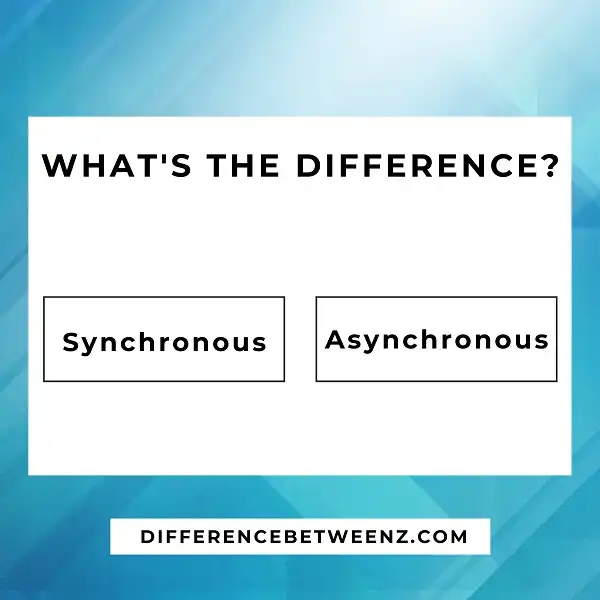Synchronous and asynchronous communication are two different methods of transmitting the information. Though both have their advantages and disadvantages, they are used in different ways depending on the situation. Synchronous communication happens in real-time, while asynchronous communication can take place at any time. In this blog post, we’ll explore the difference between synchronous and asynchronous communication, and when you should use each.
What is Synchronous?
Synchronous refers to something happening at the same time. In communication, synchronous means that participants are able to interact with each other in real-time. This is in contrast to asynchronous communication, where messages are sent but there is no guarantee that the recipient will receive or respond to them immediately. Synchronous communication is often more efficient because it allows for a back-and-forth exchange of information. However, it can also be disruptive if it interrupts other activities or conversations. Synchronous communication can take place in person, over the phone, or online using chat or video conferencing software.
What is Asynchronous?
Asynchronous refers to a process or operation that is not dependent on other processes or operations in order to proceed. Asynchronous communication, for example, does not require all parties to be available at the same time in order to exchange information. Asynchronous operations are often used in computer programming to improve performance by allowing different parts of a program to run independently of each other.
This can be particularly useful when one part of a program is waiting for input from another process, as the rest of the program can continue to run while it is waiting. Asynchronous programming can also make it easier to write programs that are reliable and easier to maintain.
Difference between Synchronous and Asynchronous
There are two basic types of communication: synchronous and asynchronous. Synchronous communication occurs when two or more people are in contact with each other at the same time, such as in a face-to-face conversation or a conference call. Asynchronous communication, on the other hand, takes place when people are not in contact with each other at the same time, such as in an email exchange or a discussion forum. Both Synchronous and Asynchronous communication have their own advantages and disadvantages.
Synchronous communication is typically more immediate and can be more conducive to collaboration, but it can also be more disruptive and less flexible. Asynchronous communication is usually less disruptive and more flexible, but it can also lead to miscommunications and delays. Ultimately, the best type of communication depends on the needs of the people involved.
Conclusion
In synchronous communication, both people are engaged in the conversation at the same time. This type of communication is typically face-to-face or over the phone. In asynchronous communication, one person sends a message and the other person responds whenever they have time. This type of communication is often done through email or text messages. The difference between synchronous and asynchronous communication can be important to understand when you’re trying to reach your customers. If you need a quick response from them, synchronous communication may be the better option.


